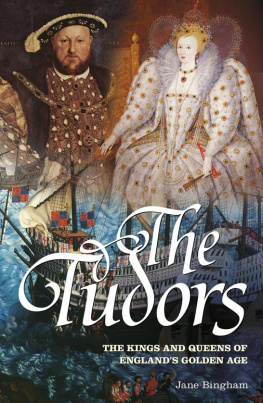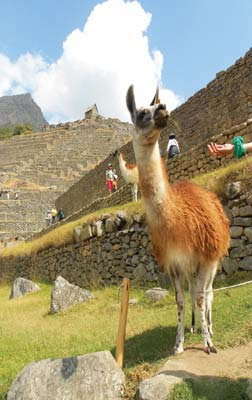You are reading a Deluxe Edition:
It was converted from clean and standard xhtml/xml files.
It uses metatags to identify content, and other data.
The available resources specific to each ebook format were used togive the reader a pleasant reading experience.
More details available at the ebookslib.com website.
Any suggestions that help us improve these editions arewelcome.
The eBooksLib.com team
2011 ebookslib.com
eBook Version
eBooksLib.com
eBooksLib, eBooksLib.com are Registered trademarks owned byeBooksDistrib S.A.R.L (LLC)
___________________
November-2011
ISBN : 978-1-4121-5856-5
I NCA LAND
Explorations in the Highlands of Peru
By
Hiram Bingham
1922
- -
FIGURE
"Something hidden. Go and find it. Go and look behind the
Ranges - Something lost behind the Ranges. Lost and waitingfor
you. Go!"
Kipling: "The Explorer"
- -
This Volume
is affectionately dedicated
to
the Muse who inspired it
the Little Mother of Seven Sons

Preface
T he followingpages represent some of the results of four journeys into theinterior of Peru and also many explorations into the labyrinth ofearly writings which treat of the Incas and their Land. Although mytravels covered only a part of southern Peru, they took me intoevery variety of climate and forced me to camp at almost everyaltitude at which men have constructed houses or erected tents inthe Western Hemisphere - from sea level up to 21,703 feet. It hasbeen my lot to cross bleak Andean passes, where there are heavysnowfalls and low temperatures, as well as to wend my way throughgigantic canyons into the dense jungles of the Amazon Basin, as hotand humid a region as exists anywhere in the world. The Incas livedin a land of violent contrasts. No deserts in the world have lessvegetation than those of Sihuas and Majes; no luxuriant tropicalvalleys have more plant life than the jungles of Conservidayoc. InInca Land one may pass from glaciers to tree ferns within a fewhours. So also in the labyrinth of contemporary chronicles of thelast of the Incas - no historians go more rapidly from fact tofancy, from accurate observation to grotesque imagination; nowriters omit important details and give conflicting statements withgreater frequency. The story of the Incas is still in a maze ofdoubt and contradiction.
It was the mystery and romance of some of thewonderful pictures of a nineteenth-century explorer that first ledme into the relatively unknown region between the Apurimac and theUrubamba, sometimes called "the Cradle of the Incas." Although myphotographs cannot compete with the imaginative pencil of such anartist, nevertheless, I hope that some of them may lead futuretravelers to penetrate still farther into the Land of the Incas andengage in the fascinating game of identifying elusive placesmentioned in the chronicles.
Some of my story has already been told in Harper'sand the National Geographic, to whose editors acknowledgments aredue for permission to use the material in its present form. Aglance at the Bibliography will show that more than fifty articlesand monographs have been published as a result of the PeruvianExpeditions of Yale University and the National Geographic Society.Other reports are still in course of preparation. My ownobservations are based partly on a study of these monographs andthe writings of former travelers, partly on the maps and notes madeby my companions, and partly on a study of our Peruvianphotographs, a collection now numbering over eleven thousandnegatives. Another source of information was the opportunity offrequent conferences with my fellow explorers. One of the greatadvantages of large expeditions is the bringing to bear on the sameproblem of minds which have received widely different training.
My companions on these journeys were, in 1909, Mr.Clarence L. Hay; in 1911, Dr. Isaiah Bowman, Professor Harry WardFoote, Dr. William G. Erving, Messrs. Kai Hendriksen, H. L. Tucker,and Paul B. Lanius; in 1912, Professor Herbert E. Gregory, Dr.George F. Eaton, Dr. Luther T. Nelson, Messrs. Albert H. Bumstead,E. C. Erdis, Kenneth C. Heald, Robert Stephenson, Paul Bestor,Osgood Hardy, and Joseph Little; and in 1915, Dr. David E. Ford,Messrs. O. F. Cook, Edmund Heller, E. C. Erdis, E. L. Anderson,Clarence F. Maynard, J. J. Hasbrouck, Osgood Hardy, Geoffrey W.Morkill, and G. Bruce Gilbert. To these, my comrades in enterpriseswhich were not always free from discomfort or danger, I desire toacknowledge most fully my great obligations. In the following pagesthey will sometimes recognize their handiwork; at other times theymay wonder why it has been overlooked. Perhaps in another volume,which is already under way and in which I hope to cover moreparticularly Machu Picchu [1] and its vicinity, theywill eventually find much of what cannot be told here.
Sincere and grateful thanks are due also to Mr.Edward S. Harkness for offering generous assistance when aid wasmost difficult to secure; to Mr. Gilbert Grosvenor and the NationalGeographic Society for liberal and enthusiastic support; toPresident Taft of the United States and President Leguia of Perufor official help of a most important nature; to Messrs. W. R.Grace & Company and to Mr. William L. Morkill and Mr. L. S.Blaisdell, of the Peruvian Corporation, for cordial and untiringcoperation; to Don Cesare Lomellini, Don Pedro Duque, and theirsons, and Mr. Frederic B. Johnson, of Yale University, for manypractical kindnesses; to Mrs. Blanche Peberdy Tompkins and MissMary G. Reynolds for invaluable secretarial aid; and last, but byno means least, to Mrs. Alfred Mitchell for making possible thewriting of this book.
Hiram Bingham
Yale University
October 1, 1922


INCA LAND


CHAPTER I - Crossing the Desert
A kind friend inBolivia once placed in my hands a copy of a most interesting bookby the late E. George Squier, entitled "Peru. Travel andExploration in the Land of the Incas." In that volume is amarvelous picture of the Apurimac Valley. In the foreground is adelicate suspension bridge which commences at a tunnel in the faceof a precipitous cliff and hangs in mid-air at great height abovethe swirling waters of the "great speaker." In the distance,towering above a mass of stupendous mountains, is a magnificentsnow-capped peak. The desire to see the Apurimac and experience thethrill of crossing that bridge decided me in favor of an overlandjourney to Lima.
As a result I went to Cuzco, the ancient capital ofthe mighty empire of the Incas, and was there urged by the Peruvianauthorities to visit some newly re-discovered Inca ruins. Asreaders of "Across South America" will remember, these ruins wereat Choqquequirau, an interesting place on top of a jungle-coveredridge several thousand feet above the roaring rapids of the greatApurimac. There was some doubt as to who had originally lived here.The prefect insisted that the ruins represented the residence ofthe Inca Manco and his sons, who had sought refuge from Pizarro andthe Spanish conquerors of Peru in the Andes between the Apurimacand Urubamba rivers.












